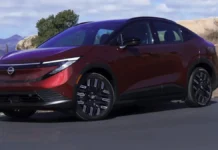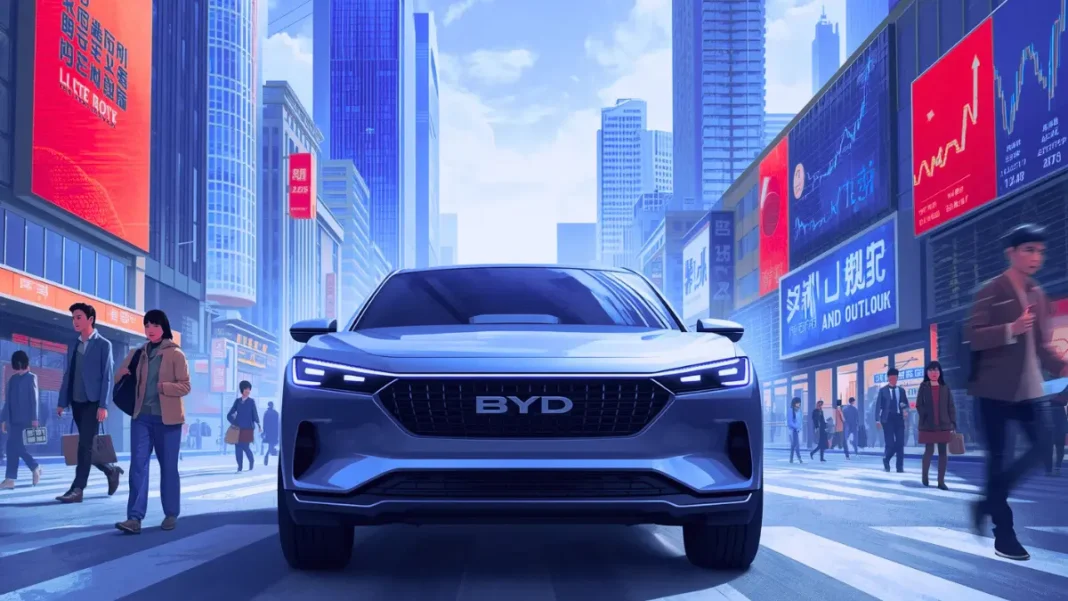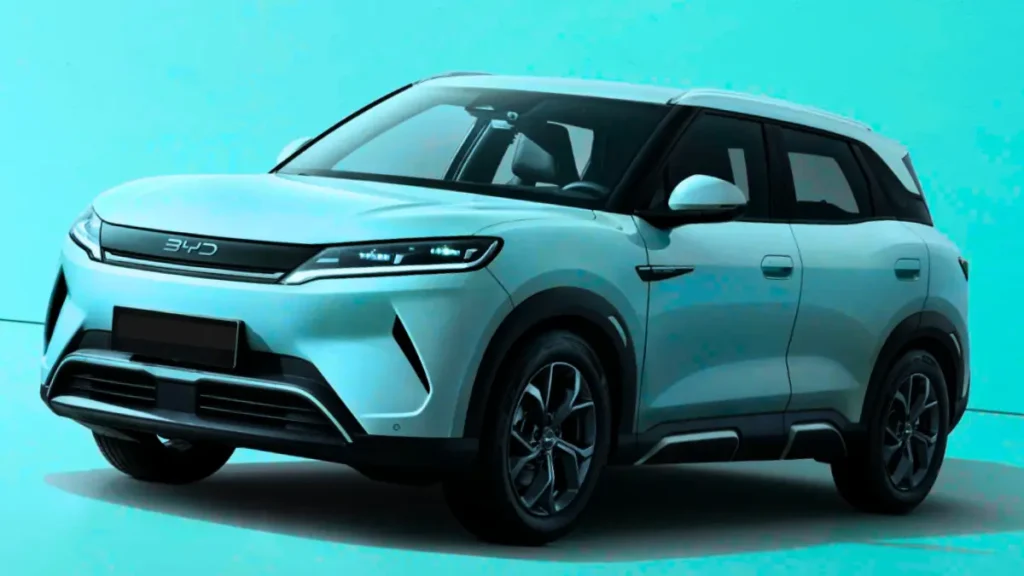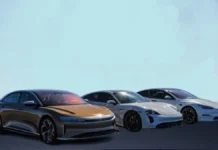Contents
- Overview
- Why this matters
- Snapshot: BYD’s recent achievements
- Market competition and pricing pressure
- Margin compression amid aggressive growth
- Supply chain vulnerabilities and raw material costs
- Regulatory and policy uncertainty
- Quality control, recalls, and reputation management
- Technological transitions and R&D demands
- Macroeconomic sensitivity and consumer demand
- International expansion complexities
- Counterpoints: Where BYD’s strengths mitigate many risks
- Assessing the core question: Is BYD facing problems?
- What to watch next: key indicators and signals
- Balanced view and likely trajectory
- FAQs:
Overview
Is BYD facing problems? That question has begun circulating among investors, industry watchers, and electric vehicle (EV) enthusiasts alike. BYD — short for Build Your Dreams — has been one of the standout success stories of the global EV revolution. Over the past decade, it grew from a modest battery maker into a vertically integrated automotive giant, challenging legacy automakers and new entrants alike. Yet rapid growth often brings complex challenges. In this article, we explore whether BYD is truly facing problems, what those problems may be, and why the company’s future remains both promising and nuanced.
Why this matters
BYD’s role in the EV ecosystem is substantial: it’s a major supplier of batteries, an automaker with broad model offerings, and a global play in propulsion technologies. Any operational misstep, regulatory setback, or market contraction at BYD could ripple across suppliers, competitors, and EV adoption trajectories worldwide. Therefore, understanding BYD’s current state helps investors, consumers, and policymakers make informed decisions.
Snapshot: BYD’s recent achievements
Before looking into potential problems, it helps to recognize BYD’s strengths:
- Market leadership: BYD consistently ranks among the top EV manufacturers globally. It has achieved significant sales volumes in China, the world’s largest auto market.
- Vertical integration: BYD manufactures critical components in-house, including batteries, motors, and vehicle electronics. This reduces dependency on external suppliers and helps control costs.
- Diverse portfolio: BYD sells a range of vehicles from affordable passenger cars to buses, commercial vehicles, and plug-in hybrids, hedging demand fluctuations across segments.
- Innovation focus: The company invests heavily in battery chemistry, blade battery architecture, and new energy technologies.
- Global expansion: BYD has expanded into multiple international markets, including Europe, Latin America, and Southeast Asia, diversifying revenue streams beyond China.
However, even market leaders encounter headwinds. Let’s examine the main areas of concern that give rise to the question: Is BYD facing problems?
Market competition and pricing pressure
Rapid increase in competition
The EV market has attracted many players: legacy automakers, startups, and international champions. Companies such as Tesla, Volkswagen, Toyota (with hybrid focus), and local Chinese startups (e.g., NIO, Xpeng, Li Auto) intensify the competitive landscape. Increased supply and overlapping product offerings create pricing pressures and thinner margins.
Downward pricing and incentives
In many markets, fierce price competition has led manufacturers to offer aggressive discounts or subsidies to maintain sales momentum. BYD, while vertically integrated and cost-advantaged, still faces pressure to protect market share. If price wars persist, profitability could erode despite scale.
Margin compression amid aggressive growth
Profitability vs. volume
While BYD’s revenue and unit sales have soared, sustaining high growth rates often requires heavy spending on capacity expansion, R&D, and marketing. Even with cost advantages, long-term margin retention is not guaranteed. Investors examining the income statement will watch gross margins, operating expenses, and free cash flow closely for signs of margin compression.
Capital expenditures and capacity expansion
Expanding battery production, new manufacturing plants, and overseas facilities demand significant capital investments. If vehicle demand slows unexpectedly, underused capacity can hit cash flow. Furthermore, rapid expansion often results in operational inefficiencies as new plants ramp up.
Supply chain vulnerabilities and raw material costs
Raw materials and commodity risk
Battery production relies on critical materials such as lithium, nickel, cobalt, and copper. Price volatility of these commodities can increase production costs. Although BYD has sought to reduce reliance on cobalt via battery chemistry innovations and secure raw material access, it is not immune to global commodity cycles.
Geopolitical and logistical risks
Global supply chains remain sensitive to geopolitical tensions, trade restrictions, and shipping disruptions. Given BYD’s global ambitions and component sourcing needs, any tariff changes or export controls could complicate operations and increase costs.
Regulatory and policy uncertainty
China’s shifting subsidies and regulations
China has driven EV adoption through subsidies, tax incentives, and supportive policies. Recently, Beijing has been gradually phasing out subsidies and tightening regulatory oversight to ensure quality and safety standards. Such shifts can alter consumer economics and demand patterns. BYD must adapt to evolving policy frameworks both domestically and abroad.
International regulatory hurdles
Entering international markets means complying with diverse safety, emissions, and homologation standards. Regulatory scrutiny, recalls, or safety investigations can damage reputation and lead to unforeseen expenses.
Quality control, recalls, and reputation management
Product reliability concerns
As automakers scale quickly, maintaining product quality and consistent manufacturing standards becomes more challenging. Reports of defects, software glitches, or battery issues can spur recalls. Recalls not only impose direct costs but can also damage consumer confidence.
Software and OTA updates
Modern vehicles rely on increasingly sophisticated software. Over-the-air (OTA) updates introduce new capabilities but also new security risks and potential reliability problems. Ensuring robust cybersecurity and update management is essential for brand reputation.
Technological transitions and R&D demands
Battery innovation arms race
Battery technology is a key differentiator in range, safety, cost, and vehicle performance. BYD’s blade battery has attracted attention for safety improvements, but the battery landscape is dynamic: solid-state batteries, silicon-anode developments, and fast-charging technologies could reshape the competitive field. BYD must commit substantial R&D to stay ahead.
Autonomous driving and smart features
Competitive differentiation increasingly involves driver-assistance systems and autonomous driving capabilities. Developing or integrating these features demands investment, technical partnerships, and ongoing software refinement. Falling behind in this area could make BYD vehicles less attractive to tech-focused consumers.
Macroeconomic sensitivity and consumer demand
Economic cycles and consumer purchasing power
Automobile purchases are sensitive to macroeconomic conditions. Economic slowdowns, rising interest rates, or inflation reduce consumers’ willingness to buy new cars or incentivize choosing lower-cost models. BYD’s broad portfolio helps mitigate some sensitivity, but lower-end segment weakness could affect volumes.
Residual value and leasing markets
EV residual values and secondary market dynamics remain evolving. If residuals underperform expectations, leasing companies and buyers may be more hesitant, which in turn affects new vehicle demand and pricing strategies.
International expansion complexities
Localization and brand recognition
While BYD has made notable progress entering overseas markets, success requires more than shipping cars abroad. It requires dealer networks, local manufacturing or assembly, after-sales service infrastructure, and brand-building. Competing with established automakers in markets like Europe or North America is a long-term endeavor.
Trade and political risks
Geopolitical tensions can complicate expansion. For instance, restrictions on Chinese firms in certain countries or national security concerns could limit BYD’s ability to operate or sell in specific markets.
Counterpoints: Where BYD’s strengths mitigate many risks
Vertical integration and scale advantages
BYD’s in-house battery manufacturing, electric drivetrain production, and component control give it cost and supply advantages compared with competitors who must source key parts externally.
Diversified product mix
BYD’s lineup spans affordable EVs, plug-in hybrids, commercial vehicles, and buses. This diversification reduces reliance on a single market segment and offers multiple revenue avenues — for example, public transport electrification.
Strong domestic market position
China’s sheer market size and BYD’s strong brand recognition domestically provide a buffer. Even if export growth faces headwinds, China-based sales alone can sustain significant volume and revenue.
Commitment to innovation
BYD’s investments in battery tech, manufacturing scale, and new product development indicate a long-term vision. While not immune to change, this focus on technology gives it tools to adapt.
Assessing the core question: Is BYD facing problems?
The short answer: Yes — in the sense that BYD faces multiple business challenges typical for a rapidly growing global automaker. However, “problems” does not mean the company is failing. Rather, BYD is navigating a complex set of risks that include competition, margin pressures, raw material volatility, regulatory shifts, and the usual operational challenges tied to scaling and internationalization.
The company’s scale, vertical integration, and diversified portfolio provide significant resilience. Many of the issues BYD faces are industry-wide and affect other major players as well. The difference is how effectively BYD manages these headwinds through cost control, innovation, market positioning, and operational excellence.
What to watch next: key indicators and signals
If you’re evaluating whether BYD’s position is deteriorating or strengthening, monitor these indicators:
- Sales volumes and market share: Quarterly vehicle deliveries, both in China and internationally.
- Gross margins and operating profit: Watch for consistent margin compression that could indicate pricing pressure or rising costs.
- Cash flow and capital expenditure: High, sustained capex without corresponding demand growth could stress finances.
- Battery costs and raw material procurement: Changes in input costs and BYD’s ability to lock in supply.
- Recall frequency and warranty costs: A surge in recalls or escalating warranty expenses can flag quality problems.
- R&D spending and new product pipeline: Continued investment in battery technology, software, and new models.
- International expansion milestones: New factory announcements, dealership rollouts, and local partnerships.
- Regulatory developments: Policy changes in China or key export markets that affect taxation, subsidies, or safety standards.
Balanced view and likely trajectory
So, is BYD facing problems? Yes — but not unique ones. BYD confronts the tribulations of any large, fast-growing automaker transitioning from regional success to global prominence. The company faces competition, margin risks, supply chain complexities, regulatory dynamics, and technological challenges. At the same time, BYD’s vertical integration, market presence, and commitment to innovation position it better than many competitors to weather these storms.
For investors and observers, the right framing is to treat BYD as a dynamic company with both meaningful strengths and real vulnerabilities. Short-term volatility and tactical missteps may occur, but the structural case for BYD as a key EV industry participant remains intact — provided it continues to manage pricing, quality, supply chains, and international expansion prudently.
If you follow BYD, pay attention to the operational and financial indicators highlighted above. They will tell you whether temporary headwinds are turning into chronic problems or whether BYD is simply recalibrating on its path to becoming a dominant global EV player.
Post You May Find Useful
- BYD Electric Car Review
- BYD Surpasses Tesla in Revenue
- Why the BYD Car is Revolutionizing the U.S. Electric Vehicle Market
- BYD electric car reliable
- Is BYD better than Tesla
FAQs:
- What are the main problems that BYD is facing in 2025?
- You can answer by citing sales decline in China, price-war margin squeeze, inventory build-up, global regulatory/tariff hurdles.
- How much has BYD cut its 2025 sales target by?
- Answer: It reduced its target from about 5.5 million units to around 4.6 million units.
- Is this slowdown only in China or also in export markets?
- Answer: Much of the slowdown is in China (domestic demand, price competition) though exports are growing — but global obstacles remain.
- Does facing problems mean BYD is failing?
- Answer: Not necessarily failing — the company is still a major EV player, but growth dynamics are shifting and risks are mounting.
- What could BYD do to overcome its current issues?
- Answer: Strategies might include focusing on profitability not just volume, expanding globally, reducing over-reliance on domestic China market, controlling inventory, improving margins.























